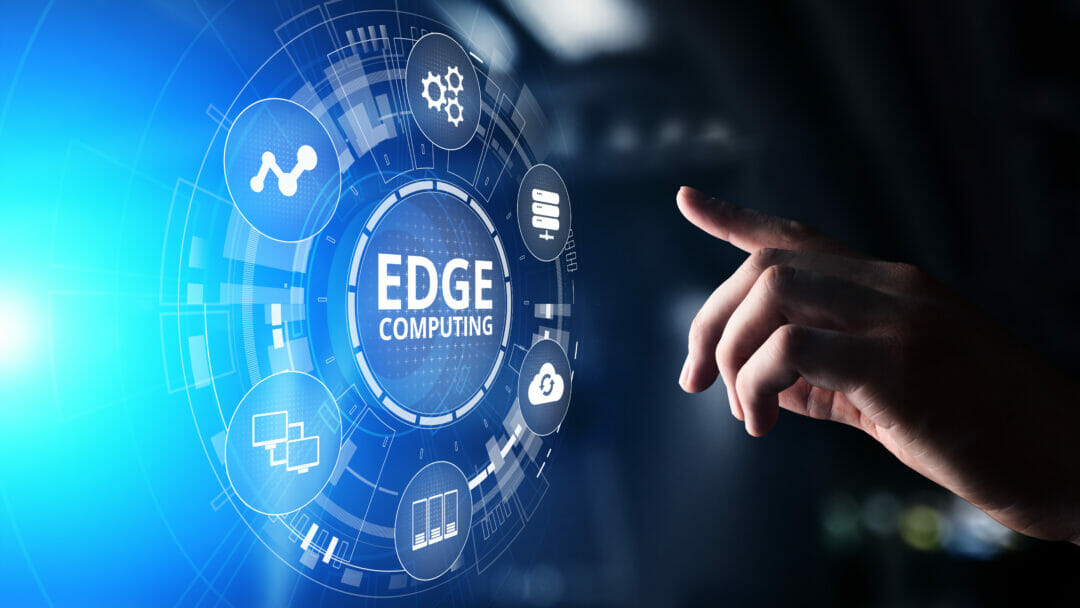A recent survey, conducted by IDC and sponsored by Lumen Technologies and Intel Corporation, indicates that two-thirds of global IT leaders are implementing edge computing, a distributed model where data processing happens closer to the point of digital interaction. IDC predicts that by 2023, over 50% of new enterprise IT infrastructure deployed will be at the edge; and by 2024, the number of apps at the edge will increase by 800%. So why is edge high on today’s IT agenda?
We are in the midst of the 4th Industrial Revolution, driven by technologies such as IoT, 5G, AI and machine learning, which are enabling organisations to speed their pace of growth and create new digital experiences.
These technologies generate vast quantities of data that offer businesses an enormous competitive advantage if they can effectively acquire it from its various sources, analyse it and then act on those insights – but to succeed, organisations need this data cycle to happen at speed. That’s where edge computing comes in.
Quicker insights require lower latency
It’s an unavoidable fact that distance creates latency – causing delays between application actions and responses.
In a highly connected world, where workforces are distributed, smart devices are proliferating and the quality of customer interactions is more important than ever, latency matters. High latency interrupts data flow and diminishes application performance – and this directly affects business operations.
Edge computing moves computation and storage resources closer to where data is generated and consumed, reducing the distance that critical information has to travel. This decreases latency, increases the speed at which data can be accessed and used, relieves bandwidth pressure and reduces the cost of supporting the movement of massive amounts of data.
The survey conducted by IDC found that 75% of business leaders require a latency of 5ms or less to ensure the success of their edge applications. This low level of latency significantly transforms application performance and allows businesses to acquire and analyse data in real or near-real-time, allowing insights to be acted on far more quickly.
Why do digital twins need the edge?
Better business and quality of life
Edge computing is driving transformation across industries. A faster cycle of data-driven insights enables more innovative products, services and digital experiences to be developed in a shorter time frame. This drives revenue growth, better customer service, lower costs and more efficient operations.
Depending on the use case, edge computing delivers meaningful benefits to different users.
In manufacturing, for example, facilities are becoming increasingly automated through connected devices, more effective robotics and ever-more sophisticated AI. Edge computing accelerates the processing of the data that these technologies produce and consume so that manufacturers can realise the full power of these technological advances.
The ability to acquire, analyse and act on operational data within the factory, enables manufacturers to monitor and improve equipment effectiveness and facility efficiency, use smart sensors to predict maintenance needs and prevent problems, and track assets and manage inventories in real-time to streamline supply chains and procurement.
Edge computing is also instrumental in making a real difference to the way we live and work. Smart cities, for example, use connected devices and sensors to gather and act on data to improve the quality of life for those living in urban areas through initiatives such as better managing traffic and transport, improving waste management services or detecting crime. Many such improvements will involve managing staggering amounts of data collected by multiple devices with ultra-low latency.
It’s becoming apparent then, that real-time access to data allows organisations to maximise the potential of next-generation technologies and applications. So it will come as no surprise that nearly 75% of executives who participated in the survey conducted by IDC consider edge computing to be a strategic investment for their organisation – one that promises competitive advantage now and for years to come.








